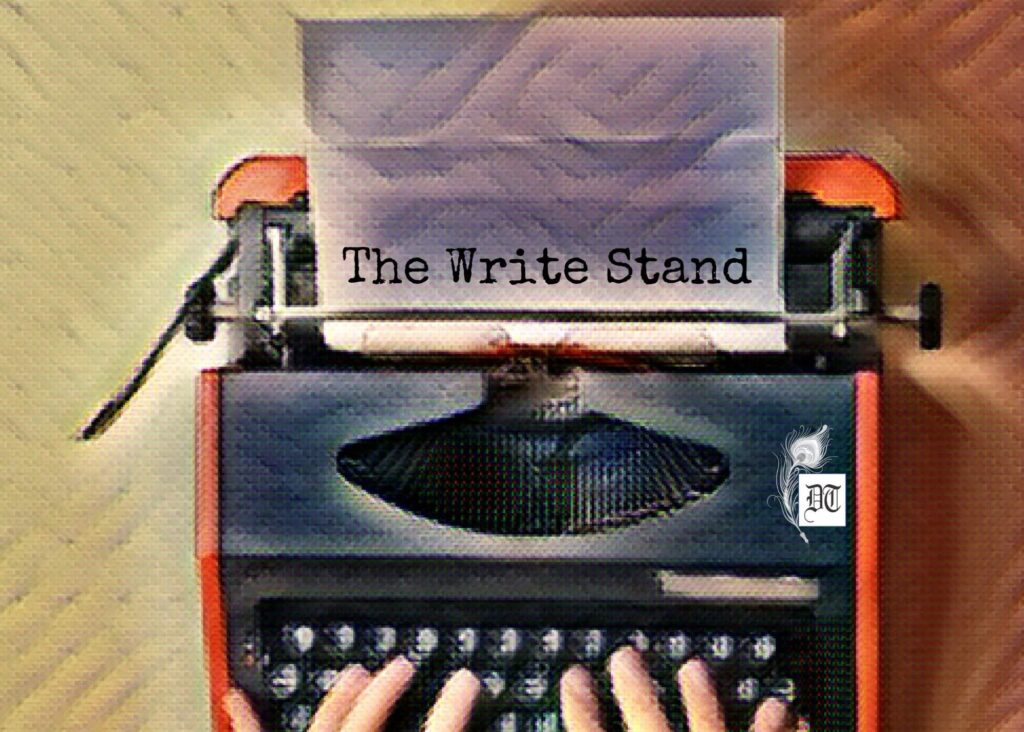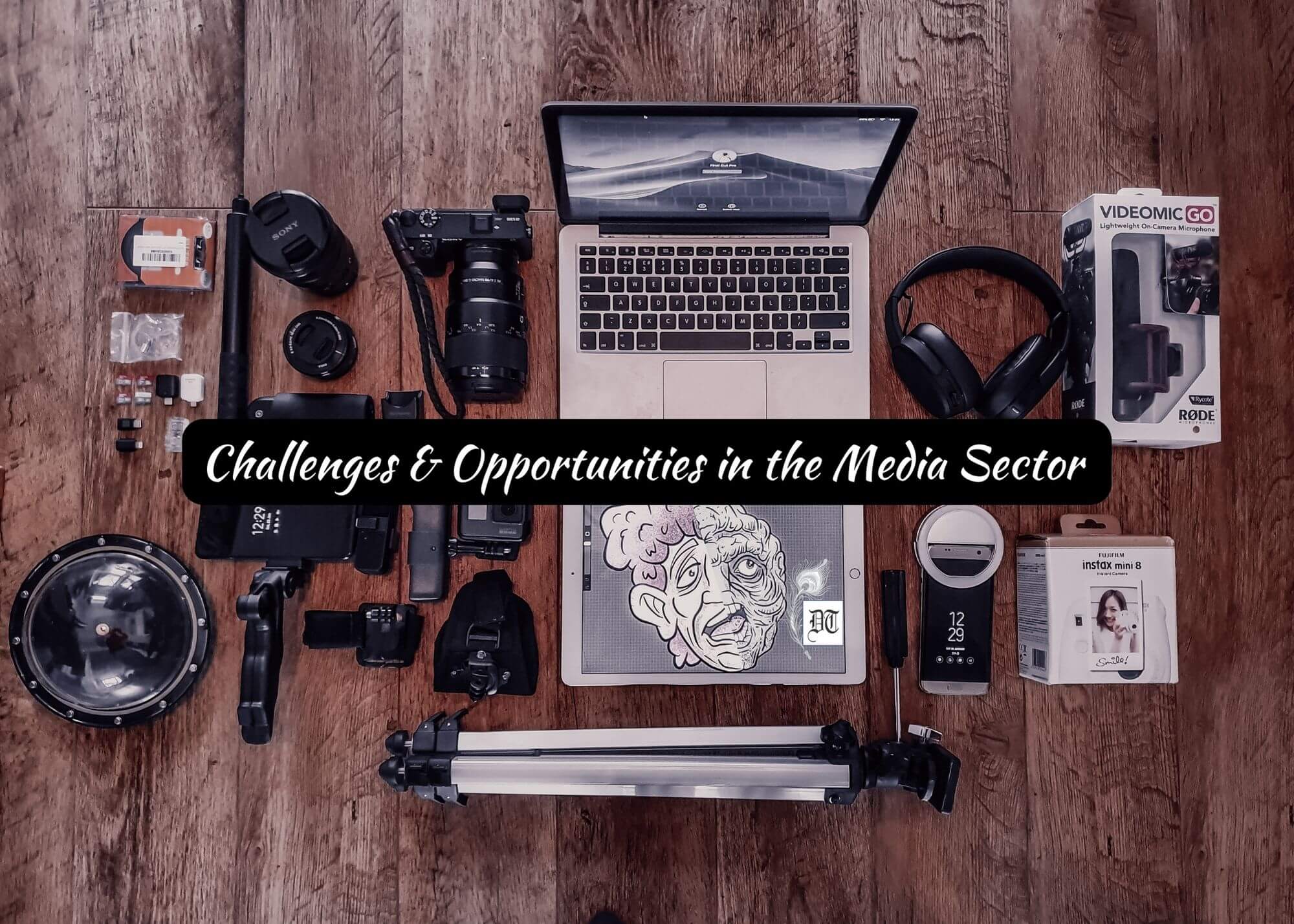Reading Time: 7 minutes
In the second and final part, Arindam explores the impact of blockchain and AI on IPR in the Indian media industry, highlighting the need for robust enforcement and international collaboration. An exclusive for Different Truths.

In the ever-evolving landscape of the media industry, technological advancements play a pivotal role in reshaping the dynamics of Intellectual Property Rights (IPR). We explore the profound implications of technology, particularly focusing on the roles of blockchain and artificial intelligence (AI), drawing insights from the works of Ghosh (2018) and Jain (2019).
Blockchain: Reinventing Digital Content Protection (Ghosh, 2018): Blockchain technology, primarily known for its association with cryptocurrencies, has found innovative applications in safeguarding digital content. A. Ghosh’s (2018) exploration delves into the transformative potential of blockchain in protecting intellectual property within the digital realm.
Decentralised Digital Ownership: Blockchain’s decentralised nature enables transparent and tamper-proof record-keeping, providing a secure and immutable ledger for digital content ownership. This has significant implications for creators and distributors seeking to assert and protect their IPR.
Ghosh examines the role of smart contracts in automating and enforcing copyright agreements.
Smart Contracts: Ghosh examines the role of smart contracts in automating and enforcing copyright agreements. Through self-executing contracts embedded in the blockchain, creators can establish clear terms and conditions, ensuring fair compensation and usage permissions for their works.
Anti-Piracy Measures: Blockchain’s ability to create a verifiable chain of ownership and authenticity holds promise in combating digital piracy. Ghosh’s insights shed light on how blockchain can be harnessed to trace and prevent unauthorised distribution, offering a robust solution to the challenges posed by piracy in the digital age.
Artificial Intelligence in Navigating Copyright Implications (Jain, 2019): Artificial Intelligence has revolutionized content creation, introducing both opportunities and challenges in the realm of copyright. Jain’s (2019) exploration delves into the multifaceted landscape of AI’s impact on IPR, particularly in the context of content creation.
AI-driven technologies can autonomously generate content, blurring the lines between human and machine creativity.
Automated Content Generation: AI-driven technologies can autonomously generate content, blurring the lines between human and machine creativity. Jain’s analysis navigates the copyright implications arising from AI-generated content, addressing questions of authorship, ownership, and the need for legal frameworks to govern such creations.
Copyright Challenges: The study scrutinises the challenges posed by AI-generated content to traditional copyright paradigms. As AI systems mimic human creativity, the question of who holds authorship and ownership rights becomes complex. Jain’s insights highlight the need for adapting existing copyright laws to encompass the nuances introduced by AI in the creative process.
Ethical Considerations: Beyond legal frameworks, Jain’s work delves into the ethical dimensions of AI in content creation. The study explores questions of accountability, transparency, and the ethical use of AI to ensure that technological advancements align with ethical principles in the realm of intellectual property.
Therefore, the confluence of blockchain and AI with IPR in the media domain marks a transformative epoch. Ghosh’s (2018) exploration of blockchain’s potential to revolutionise digital content protection, coupled with Jain’s (2019) scrutiny of AI’s impact on content creation and copyright, presents a comprehensive understanding of technology’s role in shaping the future of IPR.
As the industry grapples with the challenges and opportunities posed by technological advancements, stakeholders must remain adaptive and proactive. The insights gleaned from these studies underscore the need for a nuanced and evolving legal framework that accommodates the dynamic interplay between technology and intellectual property in the ever-evolving landscape of the media industry.
Insights from Case Studies:
The application and interpretation of IPR laws… are often exemplified through compelling case studies.
The application and interpretation of Intellectual Property Rights (IPR) laws in the media contexts are often exemplified through compelling case studies. This section examines two noteworthy cases, the ‘Bata vs. Paragon’ trademark dispute (Singh, 2020) and the ‘Delhi University Photocopying Case’ (The Wire, 2016), shedding light on the nuanced challenges and legal considerations within the realm of IPR.
‘Bata vs. Paragon’ Trademark Dispute (Singh, 2020): The ‘Bata vs. Paragon’ case revolves around a trademark dispute between two prominent footwear manufacturers, Bata and Paragon. Singh’s (2020) study dissects the intricacies of this legal battle, offering insights into the application and interpretation of IPR laws concerning trademarks in the media context.
Trademark Infringement Allegations: Bata, a renowned footwear brand, alleged that Paragon, another footwear manufacturer, was infringing on its trademark. The dispute centred on the distinctive design and branding elements associated with Bata’s products, raising questions about the protection of brand identity and the enforcement of trademark rights.
Legal Considerations: Singh’s analysis delves into the legal considerations that played a pivotal role in the case. This includes the examination of the distinctiveness of trademarks, the likelihood of confusion among consumers, and the scope of protection afforded to well-established brands. The study provides a comprehensive understanding of how IPR laws, specifically about trademarks, are applied and interpreted to resolve disputes in the media industry.
Precedent Setting: The ‘Bata vs. Paragon’ case serves as a precedent-setting example, influencing future trademark disputes in the media sector. Singh’s study explores the implications of the court’s decision on the broader landscape of IPR protection for brands within the competitive realm of the media.
The ‘Delhi University Photocopying Case’ centres around copyright issues in the educational context.
‘Delhi University Photocopying Case’ (The Wire, 2016): The ‘Delhi University Photocopying Case’ centres around copyright issues in the educational context. The Wire’s (2016) coverage of this case provides insights into the application and interpretation of IPR laws concerning copyright within the media landscape.
Photocopying of Educational Materials: The case involved a dispute over the photocopying of educational materials by a university photocopy shop. Publishers, including Oxford University Press, Cambridge University Press, and Taylor & Francis, alleged copyright infringement, arguing that the photocopying of course packs amounted to a violation of their exclusive rights as copyright holders.
Fair Use Doctrine: The Wire’s coverage explores the central argument of the defendants, who contended that photocopying fell under the fair use doctrine. The case raised crucial questions about the balance between the rights of copyright holders and the educational needs of students, highlighting the nuanced application of IPR laws in the media context.
Impact on Educational Practices: This case has had a lasting impact on educational practices in India, influencing discussions around fair use, accessibility of educational materials, and the boundaries of copyright protection in the academic sphere. The Wire’s coverage provides valuable insights into the broader implications of the court’s decision on the intersection of IPR and education within the media landscape.
In the final analysis, the ‘Bata vs. PParagonaragon’ trademark dispute and the ‘Delhi University Photocopying Case’ offer valuable glimpses into the application and interpretation of IPR laws in the media context. These case studies underscore the complexity of legal considerations within the dynamic and diverse landscape of the media industry, providing essential lessons for stakeholders, policymakers, and legal practitioners involved in navigating the intricate web of intellectual property in media-related disputes.
Exploring International Perspectives and Future Directions in IPR
International Comparisons: The assessment of India’s Intellectual Property Rights (IPR) landscape is enriched through comparative analyses with global frameworks, as articulated by scholars such as Smith (2019). These comparative studies provide invaluable insights into India’s position within the broader global intellectual property landscape. By juxtaposing India’s IPR laws, policies, and enforcement mechanisms with those of other countries, these analyses offer a nuanced understanding of India’s strengths, weaknesses, and areas for improvement in fostering an effective IPR ecosystem within the media industry.
Future Trends
…the Indian industry must embrace both technological and market dynamics.
To survive in a rapidly changing media landscape, the Indian industry must embrace both technological and market dynamics. With an increased emphasis on safeguarding digital content, the evolution of licensing models, and the pressing need for proactive measures against piracy, the future trajectory of the Indian media sector is poised for transformative shifts. Insights from studies such as Verma (2022) on emerging trends serve as guideposts for navigating these evolving dynamics, providing stakeholders with strategic foresight to anticipate and respond to future challenges and opportunities within the IPR landscape.
Recommendations
Building upon the analysis of current challenges and emerging trends, this study offers a set of actionable recommendations aimed at policymakers, stakeholders, and content creators. Strengthening enforcement mechanisms, fostering greater awareness among stakeholders, and forging international collaborations emerge as pivotal strategies to bolster India’s IPR ecosystem within the media sector. By enhancing enforcement mechanisms, policymakers can ensure the effective implementation of existing laws and regulations, thereby deterring infringements and safeguarding the rights of creators. Moreover, fostering awareness among stakeholders about the importance of IPR protection and compliance is critical to instilling a culture of respect for intellectual property rights. Lastly, forging international collaborations and partnerships can facilitate knowledge exchange, capacity-building, and best practice sharing, thereby fostering a conducive environment for innovation and creativity within the Indian media landscape.
Conclusion
This study delves into the complex world of media and IPR…
In conclusion, this article provides a comprehensive examination of Intellectual Property Rights (IPR) within the dynamic Indian media landscape. This study delves into the complex world of media and IPR, using existing research, laws, and real-world cases to illuminate the challenges and opportunities creators face. By piecing together these diverse perspectives, it offers valuable insights for navigating this intricate landscape. The interdisciplinary approach, which incorporates legal, technological, and industry perspectives, contributes to a nuanced understanding of IPR dynamics within the Indian media environment. As the industry continues to evolve amidst rapid technological advancements and changing market dynamics, the imperative of robust IPR protection becomes paramount for fostering innovation, creativity, and sustained growth within the Indian media sector.
References
Chakravarty, S. (2018). Evolution of the Indian Media Industry and Its Societal Impact. Journal of Media Studies, 15(2), 45-63.
Kapoor, R. (2020). Intellectual Property Laws in India: A Comprehensive Analysis. Legal Publishers, New Delhi.
Rathi, A. (2015). Sholay and Beyond: A Case Study on Challenges in Bollywood Copyright Protection. International Journal of Film Studies, 8(4), 231-247.
Gupta, P. (2019). Online Piracy in the Indian Media Sector: A Critical Analysis. Journal of Cyber Law, 21(3), 112-130.
Mishra, S. (2021). Impact of Digitalization on Copyright Issues in Indian Media. Journal of Digital Media Studies, 14(1), 78-95.
Ghosh, A. (2018). Blockchain Technology for Protecting Digital Content in Media: An In-depth Study. International Journal of Technology and Media, 6(2), 145-162.
Jain, M. (2019). Artificial Intelligence in Content Creation: Copyright Implications in the Media Sector. Journal of AI and Media Ethics, 10(3), 201-218.
Bansal, N. (2017). Nuances in Copyright Laws and Licensing Agreements in Indian Media. Journal of Intellectual Property Rights, 24(4), 321-335.
Singh, R. (2020). Trademark Disputes in the Indian Media: A Case Study of Bata vs. Paragon. Journal of Media Law and Ethics, 18(1), 56-72.
The Wire. (2016). Delhi University Photocopying Case: Copyright Challenges in Educational Use. Retrieved from DU Photocopy Case: What Happened and Why It’s Important (thewire.in )
Smith, J. (2019). Comparative Analysis of International Intellectual Property Rights Frameworks. Global Intellectual Property Review, 31(2), 102-120.
Verma, A. (2022). Emerging Trends in the Indian Media Industry: A Future Outlook. Journal of Media Innovation, 25(3), 189-205.
Picture design by Anumita Roy













